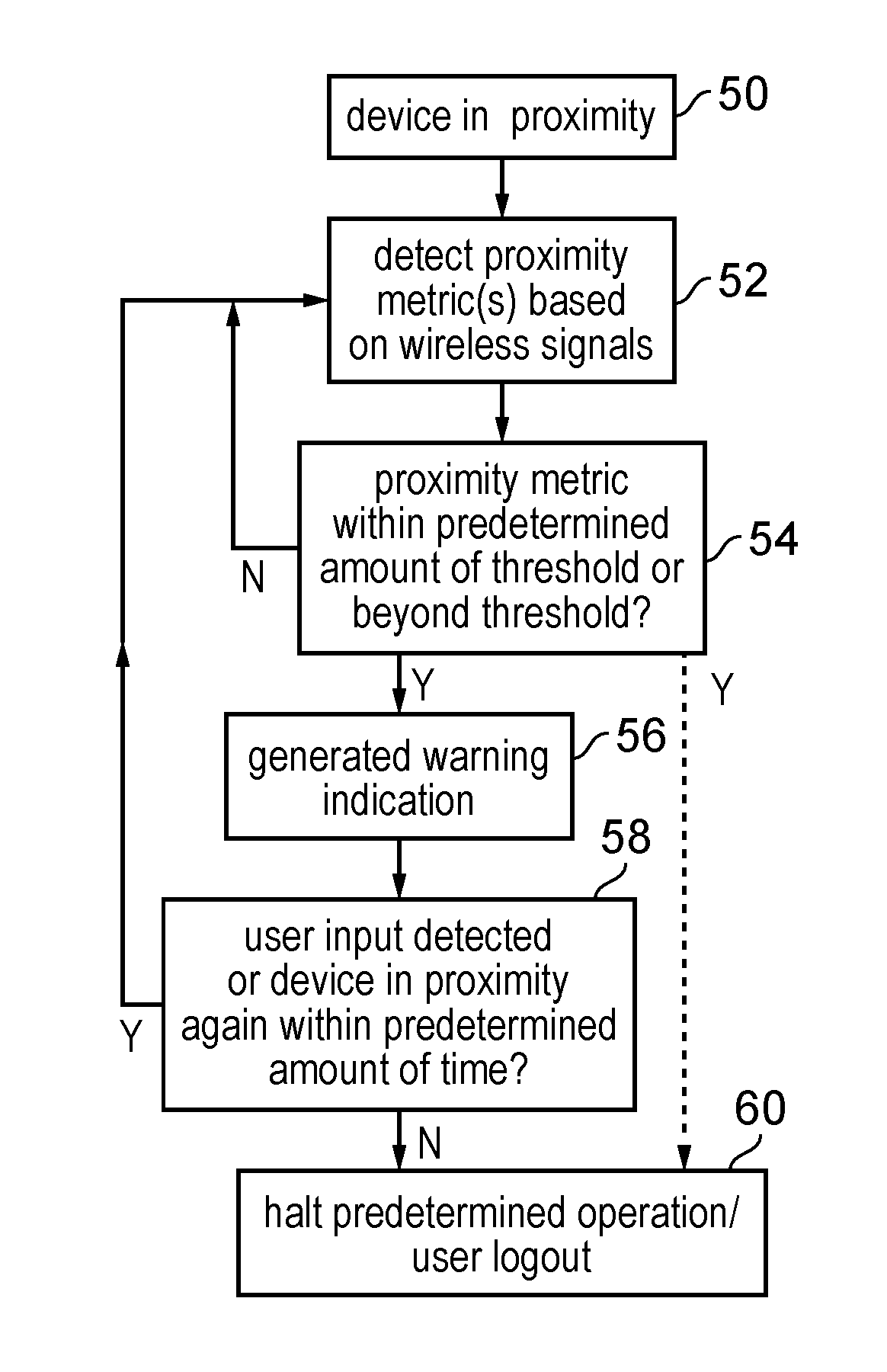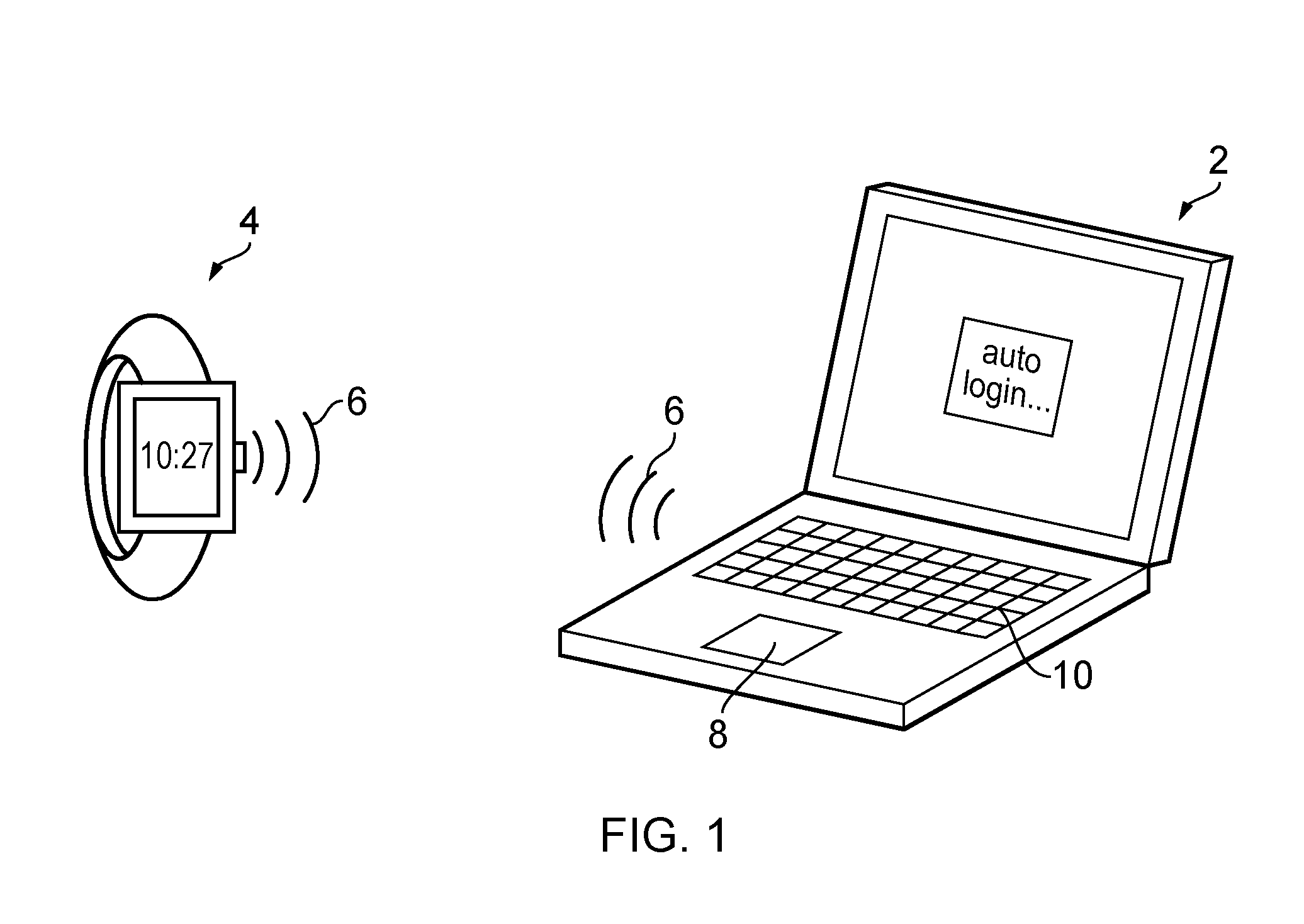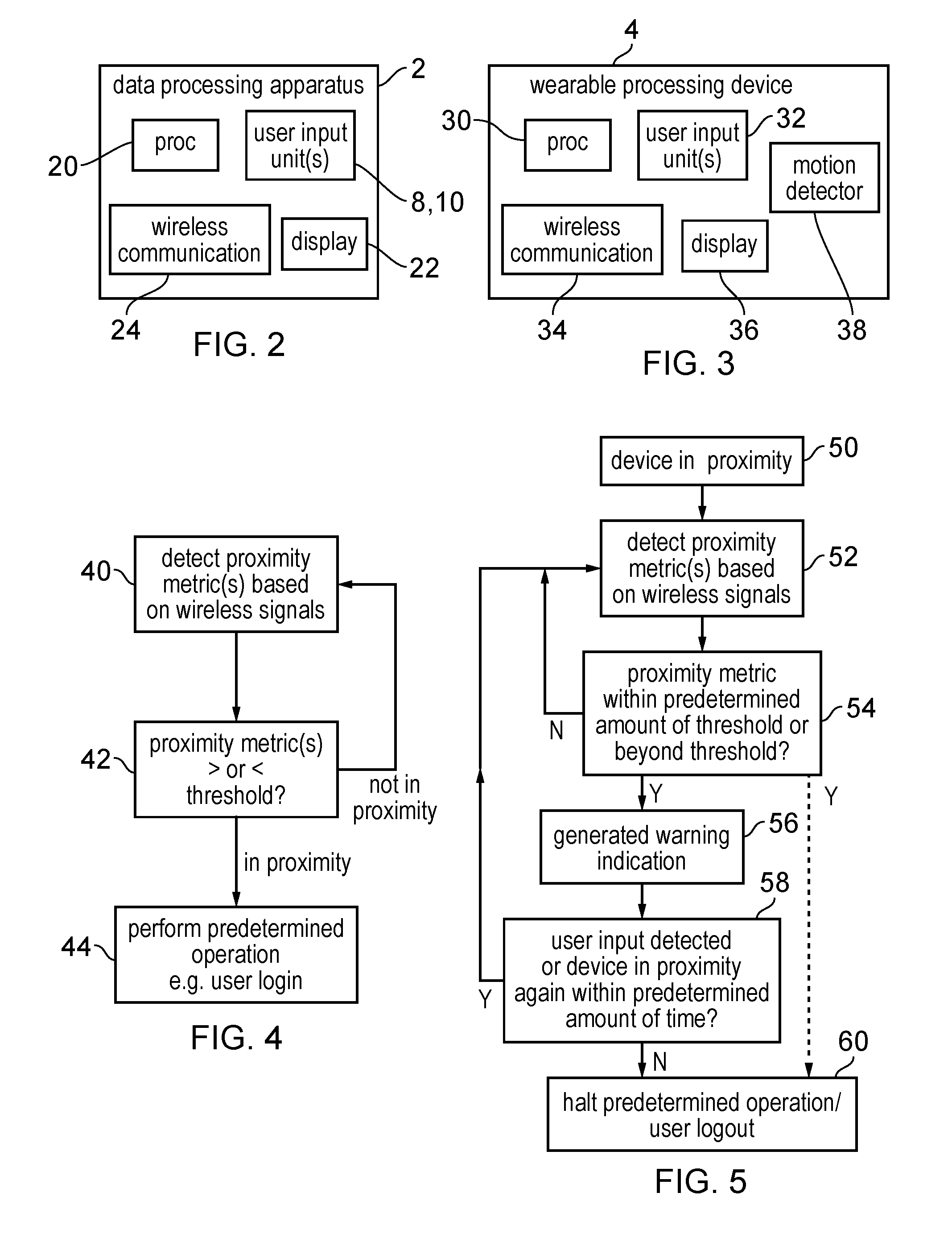Calibrating proximity detection for a wearable processing device
a technology of proximity detection and wearable processing devices, applied in the field of data processing devices, can solve problems such as inconvenience for users, and achieve the effect of reliable proximity cues
- Summary
- Abstract
- Description
- Claims
- Application Information
AI Technical Summary
Benefits of technology
Problems solved by technology
Method used
Image
Examples
Embodiment Construction
[0065]FIG. 1 schematically illustrates a data processing apparatus 2 and a wearable processing device 4. In this example the data processing apparatus 2 comprises a laptop and the wearable processing device 4 comprises a watch. Other examples of data processing apparatus include desktop computers, smart phones, or tablet computers, while other wearable processing devices may include bracelets, necklaces, rings, glasses and so on. The data processing apparatus 2 and wearable processing device 4 communicate via wireless signals 6. For example, the wireless communication may be via Bluetooth, wireless local area network communication (Wi-Fi), near field communication (NFC), radio frequency identification (RFID) signals, or some other kind of wireless communication.
[0066]The data processing apparatus has some user input units such as a track pad 8 and keyboard 10. The user can perform a user input operation using the user input units 8, 10 to control various operations of the data proce...
PUM
 Login to View More
Login to View More Abstract
Description
Claims
Application Information
 Login to View More
Login to View More - R&D
- Intellectual Property
- Life Sciences
- Materials
- Tech Scout
- Unparalleled Data Quality
- Higher Quality Content
- 60% Fewer Hallucinations
Browse by: Latest US Patents, China's latest patents, Technical Efficacy Thesaurus, Application Domain, Technology Topic, Popular Technical Reports.
© 2025 PatSnap. All rights reserved.Legal|Privacy policy|Modern Slavery Act Transparency Statement|Sitemap|About US| Contact US: help@patsnap.com



